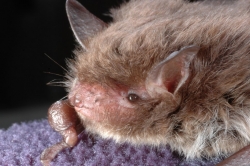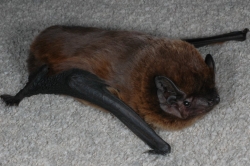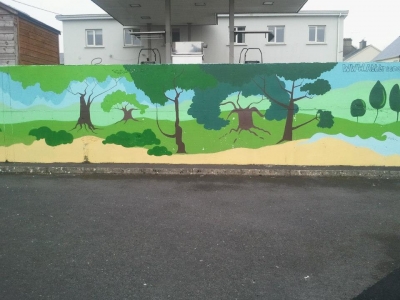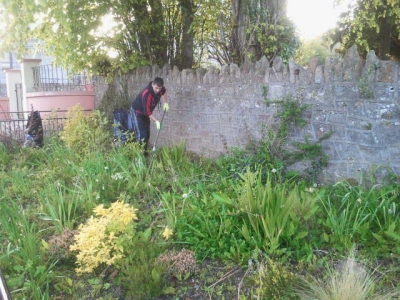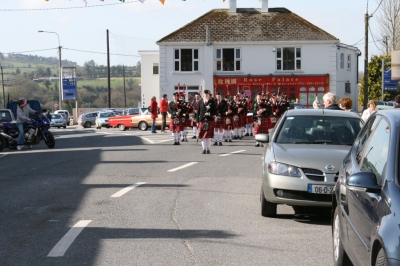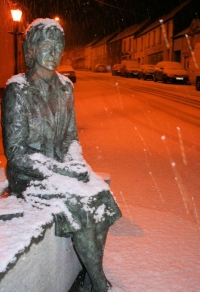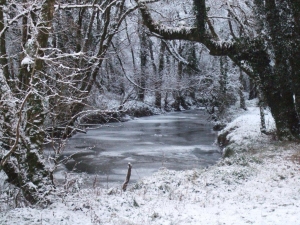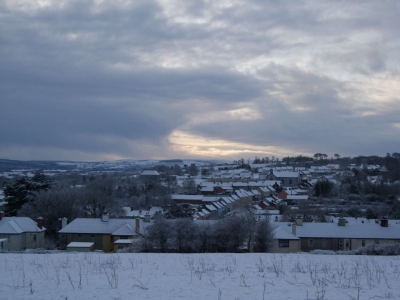Newmarket is known to be home to five of the ten known Irish bat species. These include; common pipistrelle, soprano pipistrelle, brown long-eared, Leisler’s and Daubenton’s bats. (Picture to the left shows Daybenton’s bat)
The riparian vegetation along both the Rampart Stream and Dalua River such as that at Island Wood offers ideal oases within and adjacent to the urban area for the local bat fauna for foraging and commuting. For instance, brown long-eared bats roost in the trees at these locations and use them as feeding perches from which to consume oversize prey like large moths which they catch in the air or by ‘gleaning’ them from foliage.
Daubenton’s bat can be seen hunting very close to the surface of the River Dalua. This species behaves like a little hovercraft, carefully skimming the surface as it seeks prey that has fallen in or is emerging from the water. This it gaffs with its oversize back feet before quickly transferring it to its mouth.
The two pipistrelle species are to be seen flying erratically at head height along the town’s watercourses and streetlights which attract night-flying insects. These amazingly acrobatic flyers are after the smallest prey; midges and gnats which they consume in enormous quantities. Both these species live in houses and churches within the town.
Leisler’s bat, which is built for speed with long, narrow wings, is the largest bat in Ireland with a wingspan up to 320mm. This bat is one of the rarest in Europe but Ireland has the highest population of the species in the world and it can sometimes be seen passing high over Newmarket in the early evening, even before sundown.
(Picture to the right shows Leisler’s bat)
Bat populations across Europe have fallen dramatically in recent years due to roost and foraging area loss and Ireland’s bat species have similarly suffered as a result of intolerance and fear. Old myths of bats being blind, getting caught in hair, living in belfries or being flying mice are untrue. In fact, bats are more closely related to people than to mice having only a single baby each year and, although the average lifespan of a bat is four years, they can live to exceed 40 years. Bats also provide a helpful and free service by consuming vast quantities of insects, for example, the smallest Irish species, the soprano pipistrelle, which weighs in at only 3.5g to 8.5g, eats as many as 3,500 midges every summer night!
Due to their decline, all bat species are protected by the EU Species and Habitats Directive 1992 and Wildlife Act 1976 and 2000 and it is an offense to willfully disturb these beneficial animals.
For further information contact: Bat Conservation Ireland at: www.batconservationireland.org

